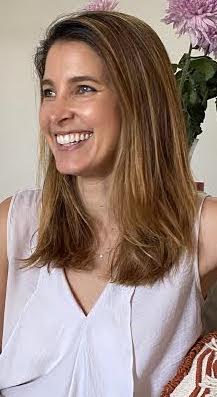“Do not live someone else’s life and someone else’s idea of what womanhood is. Womanhood is you.” — Actress Viola Davis
As women navigating the modern world, we are constantly presented with a very narrow view of what women look like, which is reinforced everywhere we look — mannequins in stores, models on the catwalk, multi-million-dollar marketing campaigns for retail giants, and all of this is amplified by our social feeds serving up picture-perfect, filtered and posed images.
Fashion by design is exclusive and aspirational, leaving many women feeling as though they need to change to fit in. It’s concerning but not surprising that this has left us comparing ourselves negatively to the images we see. Research suggests that only one in four women feel confident in her body, and most don’t feel represented in the fashion world.
Culture is starting to change, and women are beginning to reject these notions of the ideal woman in favor of self-love and acceptance. This has created a gap between consumer demand and the fashion industry legacy creating a space for new platforms to emerge.
Most models don’t look like most women. To be a catwalk model, you need to be 5-foot-9 — which accounts for 0.2 percent of the population. Most models are a size 0-2, while the Wall Street Journal has just reported that the average size of a U.S. woman has increased from a size 14 to a size 18. To be a plus-size model, you need to be a size 12, even though plus-sizes start at a size 14. To be a petite model, you need to be shorter than 5-foot-7, which is 3 inches taller than average.
Layered upon these stats are the selection of women with the “ideal” body; for instance, a plus-size model may have a flat stomach and an hourglass shape. Fashion photographers use professional cameras, flattering lighting and many photoshopping tools. Even when media supposedly show us content that represents us, it still seems unattainable, and that could make us feel even worse.
Another category gaining attention is the 55 percent of women in the United States over the age of 50. This majority segment has become more vocal about representation, given they have substantial spending power and yet are struggling to find clothes that are age appropriate.
Other areas of representation that need to be considered beyond size include height, age, ethnicity and ability.
It’s costly for brands to develop samples in more than a single size — especially when they are required to shoot content for more than one model. This is because shoot costs are an additional expense. And even if that cost is worn, with only two models, how can you represent all the above attributes? It’s challenging for any brand to solve this.
User-generated content has become a viable path for brands — often created without brand direction. For example, Rent The Runway began collecting reviews of items, along with the key body data of the reviewer. This allowed women to search for reviews and see images of the items on a body like theirs. Not only did this help women choose things that were more likely to fit well, but it allowed women to see a diversity of ‘models’ and, more important, see women like them.
Mys Tyler, a fashion platform launched in 2020, allows women to enter body data and get matched to fashion creators worldwide who are the closest body matches. This will enable them to see content that is body-relevant and see themselves represented. This crowd-sourced approach allows diversity at scale, and users have reported being more body confident due to the use of the platform.
Inclusivity and empowerment are two of the keystones of the platform. For example, a woman who had recently had a double mastectomy was trying to fill out the body quiz, and she felt bad that she was unsure how to answer the bra cup size question. She suggested that the platform include “post-op” as an option — so it did. Mys Tyler listened and adjusted its methods to tailor to various female experiences.
For women who have experienced negative thoughts about their body, they should know they aren’t alone. Although it might not be widely discussed, it’s something that almost all women must deal with at some point in their lives. And remember, we are fighting deeply entrenched societal norms.
Back in the day, it was customary for women to be repeatedly told how to act, dress and look based on what was “attractive” to the male gaze. We are finally breaking free of these restraints with our own bodies, our own voices, and our own narratives.
The fight is not over; in fact, it has just begun.


